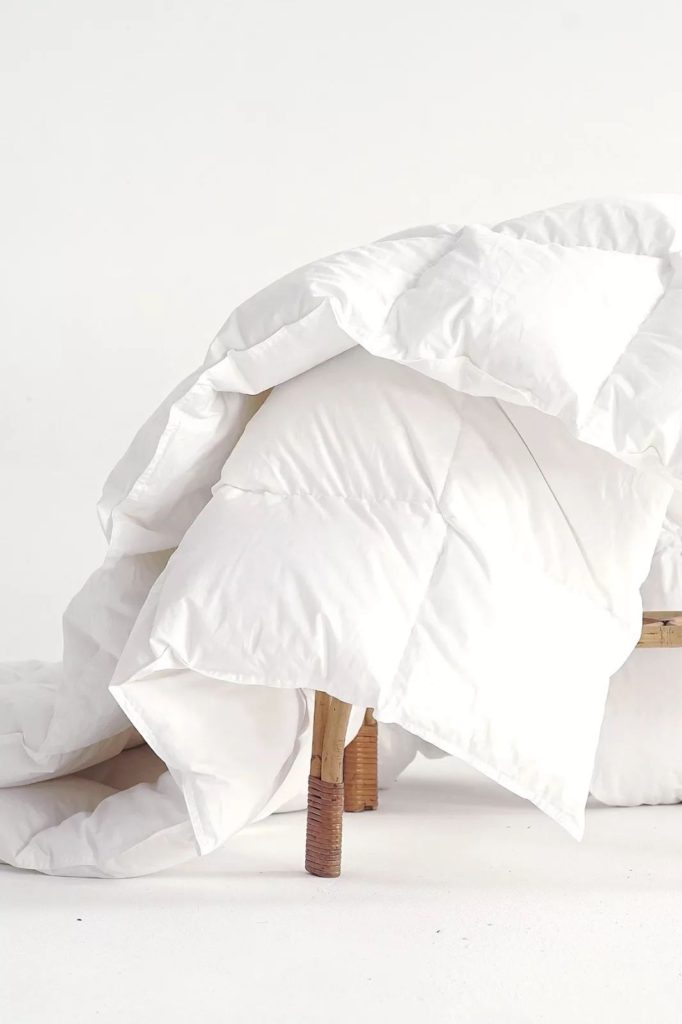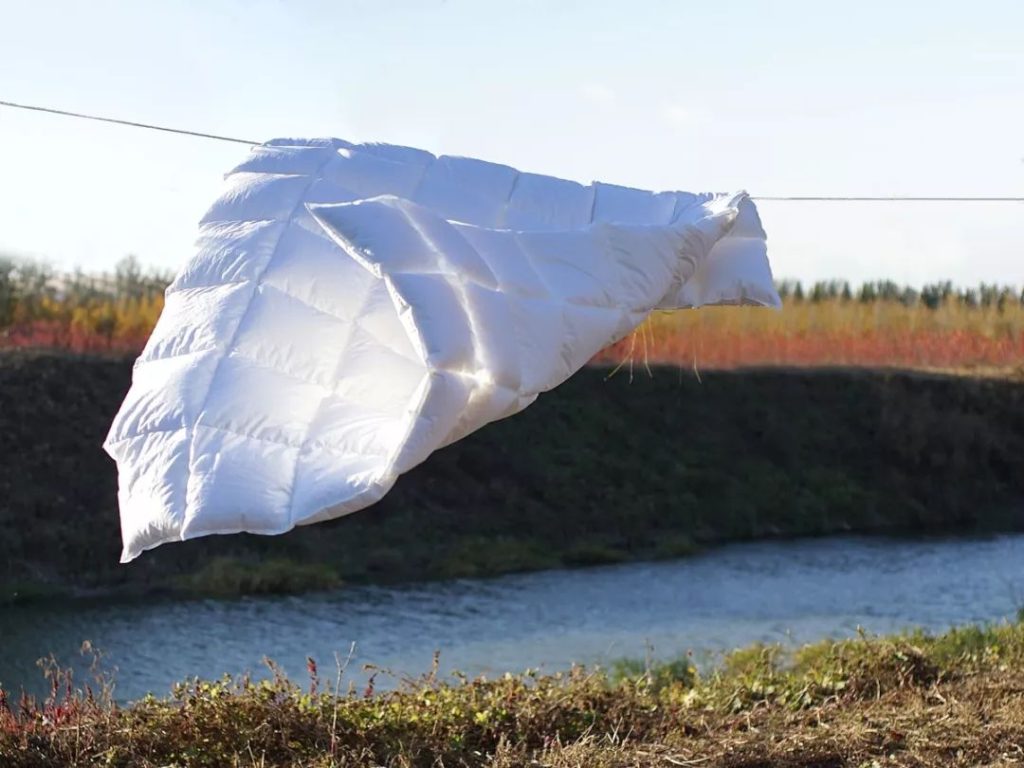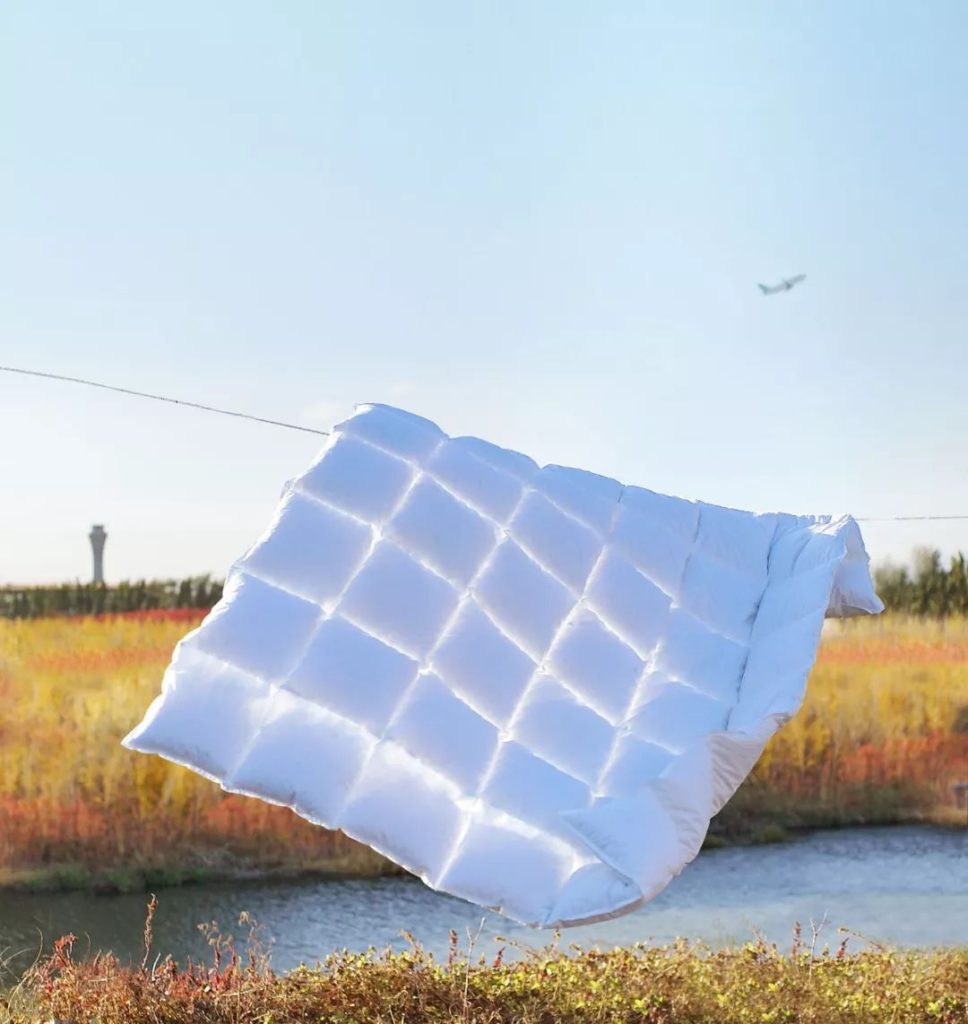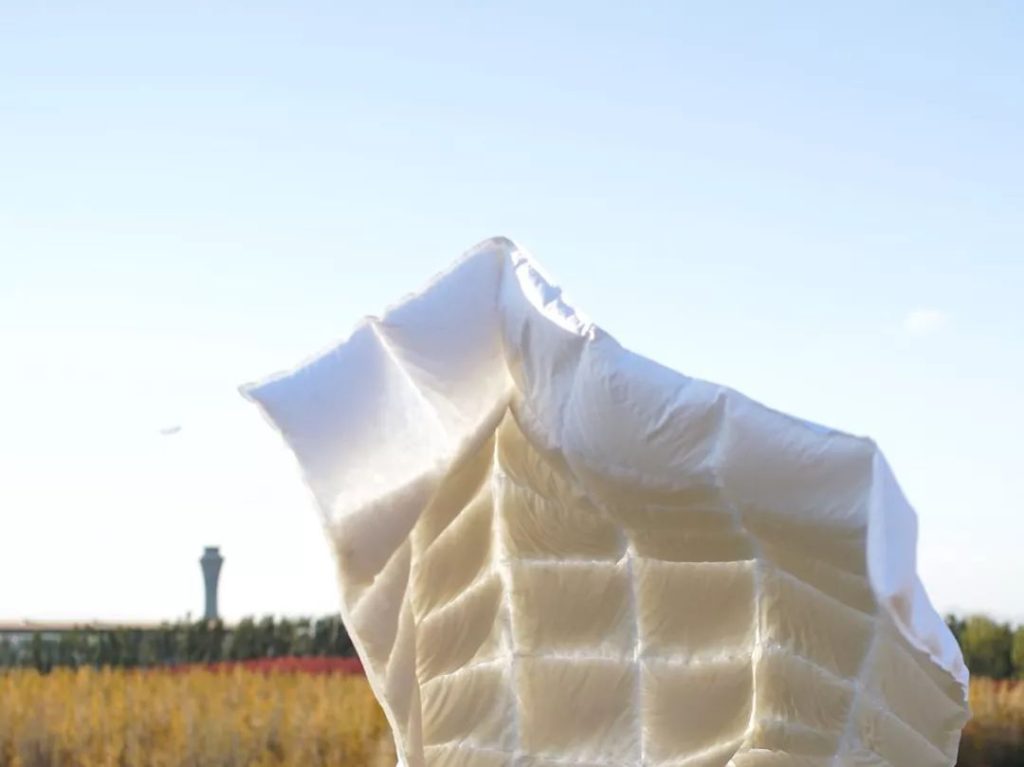How To Choose A Down Comforter That's Right For You
Fluffy duvets are supposed to be light, airy, and beautiful. However, when we buy a product from a well-known brand in the store, we feel the opposite. It’s as thick as a cotton quilt with no fluffiness, it’s not light at all, and the duvet itself isn’t beautiful either. It’s yellow and feels far from a luxurious jacquard duvet.
The down comforters I have seen in Europe are all pure white in color. The fabric is not thick and is very breathable. The down is very fluffy, and from the appearance alone, they look very attractive.
A good down comforter with high filling power must be very fluffy. If a 1200 or 1500-gram down comforter looks plain and no different from a cotton comforter, then it is definitely not made of good down and fabric.
Famous down feathers are produced in Iceland, Hungary, Poland, and even Canada. In fact, China is the world’s largest producer of goose down, with 70-80% of the world’s goose down being produced in China. The Anhui West White Goose and Northeast Goose are excellent varieties, and as long as they have a growth period of at least one year, with at least 200 days of growth, they can produce top-quality goose down.
When we look for goose down, we don’t look at the origin of the geese, but focus on the fluffiness, which is the core indicator of whether the goose down is warm or not. And goose down is graded with clear pricing, so as long as you find a reliable factory, you won’t be deceived, and the fluffiness of the goose down will be guaranteed.
The real challenge is the fabric and feather-proof fabric.
The truly good goose down requires the following: fluffiness of 800+, 100-count cotton feather-proof fabric, and popular sewing techniques.
Many friends may not know about goose down or have never seen a good goose down comforter. Let’s first educate ourselves and then discuss the process of producing goose down comforters in detail.
Down comforters, cotton comforters, and silk comforters
There are many types of quilts on the market, and the main natural fiber types are: down, cotton, and silk quilts. Down quilts are further divided into duck down and goose down. Except for the world’s top wild Icelandic duck down, goose down is generally better than duck down.
Due to a lack of research, we cannot simply evaluate the advantages and disadvantages of goose down, cotton, and silk quilts. As a higher-end natural fiber quilt than cotton, there are too many performance issues with silk quilts, which are rarely seen in Europe and are full of counterfeit products in the market. Every time we go to European department stores, the quilts sold there are goose down, and we have slept on very good goose down quilts in high-end hotels, which left a deep impression.
The European habit of using quilts is completely different from that of Chinese people. They prefer to use single-person quilts, so the mainstream product is a 135/140*200cm single-person goose down quilt. In places with heating, generally only 200-400 grams of quilt per person is used in winter, which is light, portable, and warm enough. Many years ago, we stayed at a hotel in St. Petersburg, and the thin single-person goose down quilt there left a deep impression on us. Not to mention warmth, the key is portability. The small and narrow quilt can make you roll around and still cover you.
Icelandic eiderdown, Hungarian down, Polish down, Northeast China down, and Western Anhui China down
Aside from wild Icelandic eiderdown, some of the more well-known types of goose down are Hungarian down, Polish down, Northeast China down, and Anhui West Domesticated White Goose down. Canada also produces goose down, but industry insiders say that the output is relatively low and is unlikely to even meet the demand for the famous Canada Goose down jackets.
Hungarian and Polish down are both very good, but they face the same problem of being from smaller countries with lower production. Currently, China is the main producer of goose down in the world, accounting for roughly 70-80% of global output. The more famous production areas are Heilongjiang and Jilin in Northeast China, as well as Anhui West.
The origin of the down is not as important as the growth period of the geese. If a goose’s growth period can exceed 200 days, especially if it has gone through the winter, then there will be relatively large down clusters.
Using the place of origin to distinguish goose down is not scientific. There are scientific standards for measuring good down – fluffiness and the number of down clusters per gram of goose down. To meet these two core standards, the geese must be raised for at least 200 days, and even up to one year.
Even though the place of origin is marked when selling raw materials, the goose down factory actually pays attention to the technical indicators. Large down clusters must come from large geese, which necessarily have a longer growth period. The down used in my family is the best goose down in China, with a fluffiness exceeding 800, and the price has already reached about $120 per kilogram.
The most crucial factor is the fluffiness
Aside from the place of origin, there is another deceptive technical indicator for goose down, which is the down content. Down refers to a complete, spherical goose down cluster. Currently, the Chinese national standard is very strict (higher than the European standard), requiring manufacturers to label the highest goose down content as 95%. Because no matter how high the standard is, a certain amount of feathers and fluff will still be present in a pure spherical down cluster. Therefore, even in the purest case, the national standard considers it to be only 95% down.
This raises another issue. In the goose down industry, the vast majority of geese are farm-raised with short growth periods, small down cluster diameters, and poor fluffiness, but they can still achieve 95% down content and claim to be 95% down, which meets the standard.
Place of origin is not as reliable as growth period, and 95% down content can be small goose down from farm-raised geese. So how do we judge the quality of goose down? This indicator is called loftiness.
The principle of a goose down quilt is to achieve insulation and breathability by filling it with goose down. The larger the down cluster, the greater its ability to hold air, and the better its insulation. If the same weight of goose down is placed in a container of the same volume, the higher the goose down, the better the loftiness.
Fluffiness is the most important criterion for measuring the quality of down, and it cannot be faked. The higher the fluffiness, the higher the volume of the same weight of down in the same container. The higher the fluffiness, the stronger the ability of the down to hold air, and the better the warmth retention. Our down comforter has a fluffiness of over 800, which is close to the quality of down used in luxury down jackets. The down in regular down jackets is definitely not as good as the down in my family’s comforter.
Loftiness is a comprehensive indicator that encompasses all the properties of down. The origin can be faked and 95% down content can be achieved using small duck down, but loftiness is always genuine. A high loftiness down can achieve optimal warmth with less fill (large clusters have greater air-trapping ability).
Loftiness can be recognized by sight. If a down comforter (the same goes for a down jacket) feels light but looks voluminous, then it has good loftiness and warmth. In China, a genuine down comforter made of goose down generally has a loftiness of 600+ to 650+. However, many so-called down comforters actually contain feathers instead of down clusters. You can imagine that down clusters are like little balls of fur that support each other and trap air. However, feathers cannot support each other or trap air. The warmth comes from the weight, not the down.
Down feathers that can be found in velvet or down jackets are composed of three parts: down clusters, feather filaments, and feathers. Down clusters, which mainly come from the chest, serve as the core element that provides warmth. Many down filaments radiate from the central point. The quality of down clusters depends on the number of days it took to grow, the country of origin, the farm environment, and the variety. The better the quality of down clusters, the larger the down nucleus at the center of the down cluster, the stronger its ability to hold air, and the warmer it is.
Down feather is a fine hair separated or broken from down or feathers. Since down relies on the triangular space formed between down feathers to keep warm, a single down feather does not have insulation properties. Using down feathers to impersonate goose down is an important means of counterfeiting. Ordinary people cannot tell the difference between down feathers and down by touching alone without opening the quilt. Many famous brands of down quilts are also filled with a combination of down and down feathers. Down feathers are very cheap and do not provide adequate warmth.
Feathers typically form a fan shape, composed of a shaft and fine filaments. Their size ranges from 2cm to 14cm. Typically, feathers smaller than 6cm are used for textile products.
There are different standards for goose down in the industry in various countries, but they can be converted to each other. When buying a goose down comforter, it is important to ask the seller about the fluffiness, which is difficult to fake and is the most critical factor in determining the cost. A goose down fluffiness level between 800-850 is already considered top-quality for international goose down comforters. Goose down with a fluffiness level of 900 is used to make professional mountaineering down jackets.
Thin, translucent, soft, and also resistant to pilling
Good goose down comforters require high fluffiness and a certain amount of down per gram, which cannot be faked and can be detected. To achieve this level of fluffiness and down content per gram, one must use white geese that have been in production for over 200 days or even up to a year.
We have tested European brand goose down comforters that we brought back ourselves, and the fluffiness is also around 800+.
However, the fabric used in Chinese-made goose down comforters is not up to par.
Although there is top-quality goose down in the world, the goose down comforters sold in China generally do not use high-quality fluff, and many of them are made mostly of feather fibers. Feather fibers are easy to poke through the comforter, so the fabric and sewing methods need to be adjusted accordingly, such as using thicker fabric and even adding a leak-proof fluff lining, requiring no noise, and tightly sewn to prevent feathers from poking through.
I speculate that this vicious cycle, starting from low-quality or fake goose down, has led to China’s anti-feather cloth direction going astray. Good-quality down is mostly made up of large, intact down clusters, which are not as likely to poke through, so the fabric does not need to be as thick and can use thin, breathable anti-feather cloth. Thin, breathable fabric may make more noise, but many users do not mind too much.
European anti-feather cloth is thin, breathable, has a high density, and is soft.
Good down comforter, the fabric is thin, soft and prevents feather drilling, overall it is relatively light.
Light, fluffy, portable, and breathable
Previously, some basic knowledge about goose down comforters has been intermittently explained. But what exactly makes a goose down comforter so good?
Due to the large number of counterfeit and defective goose down comforters, the standards I am describing are based on the top foreign brands of goose down comforters that we purchased in Germany, as well as the results of the comforters we tested.
1. Fluffiness
A good goose down comforter must be very fluffy, and I mean the kind that has a lot of ups and downs and is particularly fluffy. Generally, if the fluffiness level reaches 700+ or 800+, this effect can be achieved. If the comforter is flat, it is basically not made of good goose down.
If the down comforter you want to buy does not achieve this level of fluffiness to the naked eye, it can basically be determined that it is not made of good down. Because good down has a high degree of fluffiness.
2. Lightness
Lightness is a relative concept. When I say “light,” I mean that if low-quality goose down requires 1500 grams, high-loft down can achieve the same level of warmth with a maximum of 1200 grams. Of course, to achieve the same level of warmth, a cotton quilt may need 3000 grams or 4000 grams, or even 5000 grams, which is really heavy.
Good down comforters should be lightweight
The wind can easily blow up the down comforter in our house.
3. Portable
This is our previous experience and the experience we had while trying the sample. A good down comforter, especially a single-sized one, can follow your body as you turn over frequently, and the blanket will still cover you. Of course, if you kick too hard, the blanket will still fall off. Additionally, the feeling of a thick cotton blanket is like diving into it, and there might be a cold draft around your neck. But with a down comforter, it won’t compress your neck, and you definitely won’t feel any draft coming in.
4. Breathable
We are in New York, and the middle and late October is the coldest time of the year before the heating is turned on. With our own 800-gram goose down duvet, we still feel very hot when sleeping at night. The key point is that if it were a cotton duvet, you would probably sweat a lot, but with a goose down duvet, people basically don’t sweat or sweat very little. The combination of high-quality breathable goose down and breathable high-quality fabric can achieve this effect.
Although the fabric has a high density, it still achieves thinness and breathability.
Breathability is very important for the sleeping experience. If you have slept well with a down comforter, it’s almost impossible to go back to a thick cotton comforter.
Fabric, Material, and Sewing
As mentioned earlier, regardless of origin, good down is judged by its standard, which requires a fluffiness rating of 800+. This kind of down is close to top-grade and is generally only used by international luxury brands, such as Canada Goose or Moncler.
The down comforter we bought in Germany has a fabric count of 140, which is impressively high yet still thin, soft, and breathable.
Meanwhile, the usual sewing method for down comforters produced in China is machine-sewn, which may seem dense but is not as aesthetically pleasing or effective at preventing down leakage as the European method. Friends with experience in the home industry may understand what I mean – any high-quality product cannot be produced entirely by machines and requires skilled workers to be involved.
Currently, most down comforters are filled by machine for faster production. However, the filling and sewing process for my home’s down comforter is completely different. Although even the best down comforters may have feathers poking out, generally speaking, the better the down, the less likely it is to happen.
Good quality down comforters have a high fabric density, are anti-flannel and breathable. The sewing process requires a high level of manual labor and skilled workers.
Size of Goose Down Comforter
Choosing the right size for a down comforter is a topic that could fill an entire article. Simply put, the ideal size should be a single-person comforter, with the standard dimensions preferred by Westerners being 135200cm or 140200cm, with the feet possibly exposed.
As for thickness, many down comforters require 1500 grams of filling to achieve the same level of warmth, while the best ones only need 1200 grams (in fact, 1100 grams is already enough).
Washing and precautions for down comforters
Sound
Good down-proof cotton plain weave fabric is far superior to similar fabrics in terms of breathability and lightness. Moreover, due to the weaving method, the plain weave fabric’s down-proof effect is naturally better than that of satin weave fabric.
However, the disadvantage of this fabric is that it makes noise. Within the first month of purchase, there may be slight noise, but it will not be loud enough to affect sleep. As mentioned earlier, most European goose down comforters are made of this type of noisy plain weave cotton fabric, and consumers do not care much about this noise.
However, many merchants ultimately choose satin weave fabric because some users do not like the noise. Satin weave fabric has a lower noise level, but there is a big gap in terms of breathability and aesthetics compared to plain weave fabric.
Black velvet
Because good down comforters use goose down with a fluffiness of over 800, which mainly comes from the down of large white geese with a growth period of over 200 days, especially the down of breeding geese. However, many people say that the large white geese are not completely white, and there may be some black or differently colored down. If you want to sort out these black or differently colored down, it can only be done manually, which is not worth the effort, and because the proportion is very small, it is not necessary. Several European down comforters that we purchased also have this situation.
Therefore, if you find black or differently colored down appearing in the down comforter under strong light, please do not mind, as this is normal.
The proportion of black or differently colored down in white goose down duvets is very low.
Smell of Down Comforter
After independent testing, the cleanliness of good down comforters has reached 900mm or more (some down comforters claim that they can reach 1000mm or more, but this is unrealistic in actual production because it is impossible to achieve without a tiny bit of dust).
However, newly received down comforters may have some down smell, so let the down breathe in your home’s air for a day and you will no longer smell it.
Water wash
Goose down comforters can definitely be washed with water. The goose down industry is actually a business of purchasing goose down, cleaning it with water, and sorting it. However, due to the pollution caused by water washing, the number of down factories has greatly decreased.
For the entire goose down comforter, even if we recommend that you do not use a duvet cover, if you do use one, frequent washing may not be necessary. If it is a 180-gram single-person quilt, we recommend hand washing and drying. However, for other sizes of goose down comforters, ordinary households cannot clean them and cannot air dry them, so we recommend that you send them to a laundry for washing.
Goose down comforters cannot be ironed, and can be air-dried but not exposed to direct sunlight.
Goose down comforters, unlike some other quilts, do not get clumped. However, it is recommended to air dry or tumble dry every three to six months to maintain the fluffiness.


















